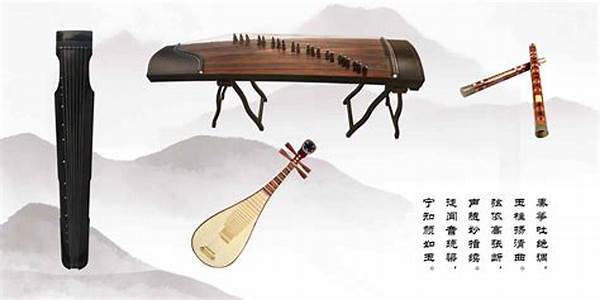If you’ve ever found serenity nestled within the gentle embrace of a bamboo forest or felt tranquility sweep over you with the rhythmic sound of waves, then you know the power of nature’s music. Now imagine that calming essence distilled into the delicate notes of traditional Chinese musical instruments. It’s like having a piece of peace and enlightenment right at your fingertips!
Read More : Easiest Wind Instruments To Learn At Home
Allow me to whisk you away on a harmonious journey, one where the elegant sounds of the guzheng, the soulful erhu, and the mesmerizing dizi act as your sonic guides. The allure of Chinese traditional music instruments lies not just in their historical grandeur but in their magical ability to enhance meditation practices. These instruments are more than just relics of cultural heritage; they represent a serene path to inner calm.
The Harmony of Tradition: Chinese Music Instruments in Meditation
In the chaotic orchestra of modern life, finding serene intermissions is crucial. Chinese traditional music instruments, with their delicate and profound resonance, offer a unique avenue to enhance your meditation practices. But what makes these instruments such catalysts of calmness?
The Guzheng’s Enchanting Essence
The guzheng, with its vast strings and delicate plucks, creates a soundscape reminiscent of flowing water and rustling leaves. This ancient instrument provides a canvas for the mind to paint with thoughts of tranquility. When incorporated into meditation, the guzheng’s tones resonate with the heart’s strings, fostering deep introspection and peace.
Erhu: The Chinese Violin of the Soul
The erhu sings with the voice of human emotion—its two-stringed melodies echoing both joy and sorrow. This instrument guides meditators on a journey through the valleys of their subconscious, enabling them to confront and embrace their innermost feelings. The erhu doesn’t just enhance meditation; it transforms it into a soulful introspection session.
Dizi: The Ancient Flute’s Whisper
The dizi, a bamboo flute, whispers tunes that mimic the dance of the wind. Its breathy notes add a layer of ethereal beauty to meditation practices. The dizi’s melodies encourage a connection with nature, helping the mind to wander and relax. Listening to the dizi is akin to having nature itself as your meditation soundtrack.
Crafting a Peaceful Ambiance
Integrating these Chinese traditional music instruments into your meditation practice isn’t just about hitting play on a track. It’s about creating an ambiance—a symphony of senses. Picture a room dimly lit with candles, sitting cross-legged on a soft mat, while the guzheng gently nudges you into a tranquil state.
Exclusive Soundscaping Services
Today, there are exclusive services that offer personalized soundscapes featuring these instruments. Imagine having a custom-crafted soundscape designed to align with your spiritual energies. It’s not just meditation; it’s a curated experience.
Read More : Best Instrument Indonesia Angklung Orchestras Performing Worldwide
Testimonies of Transformation
Many practitioners swear by the transformative power of Chinese traditional music instruments. Take, for instance, Sarah, a long-time meditator, who shares, “Incorporating guzheng into my meditation was like switching from black and white to vivid color. I suddenly found depths of meditation I hadn’t previously accessed.”
Scientific Backing
Research supports these anecdotal experiences, suggesting that the sound waves from these instruments can alter brain waves, promoting a meditative state. A study at Beijing’s Music Therapy Institute found that subjects experienced increased relaxation when exposed to traditional Chinese music, compared to silence or other genres. This is more than just melody; it’s science meeting serenity.
Incorporating Chinese Traditional Music Instruments into Meditation
To delve deeper into the use and power of Chinese traditional music instruments in meditation, here are some ways to incorporate them into your practice:
A New Era of Meditative Practices
As the popularity of traditional mindfulness practices grows, incorporating Chinese traditional music instruments is like adding an ancient layer to contemporary meditation. It’s a step back to move forward, grounding modern-day stress relief in ancient wisdom and synergy.
Remember, the next time you seek a place of peace amid life’s cacophony, reach for the delicate echo of a guzheng or an erhu’s wail. These aren’t just instruments; they are your personal guides on the journey toward enlightenment. So, why not indulge and allow the rich tapestry of Chinese traditional music to enhance your meditation practices today? Start your journey into this melodious arena and experience a harmony that transcends time.
